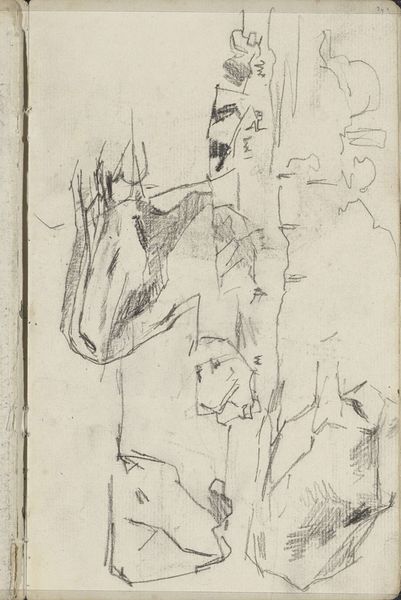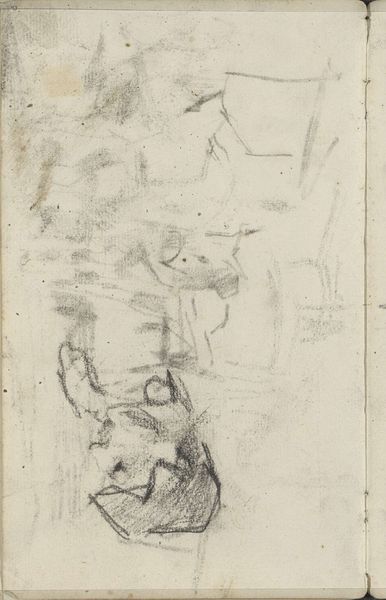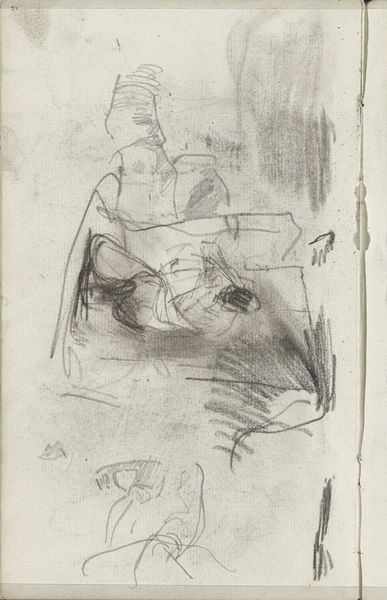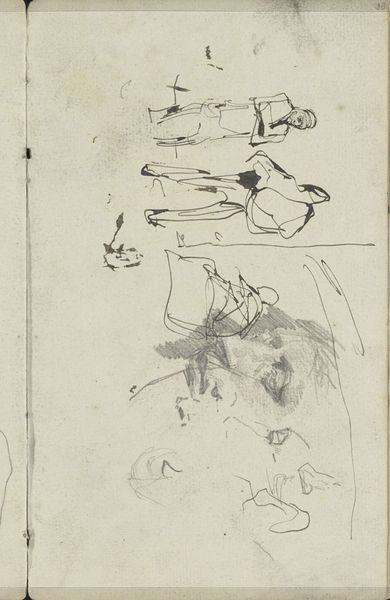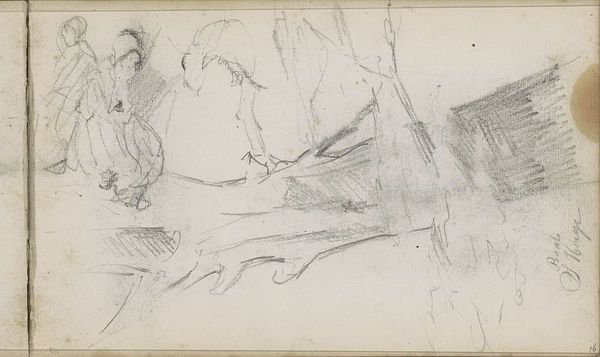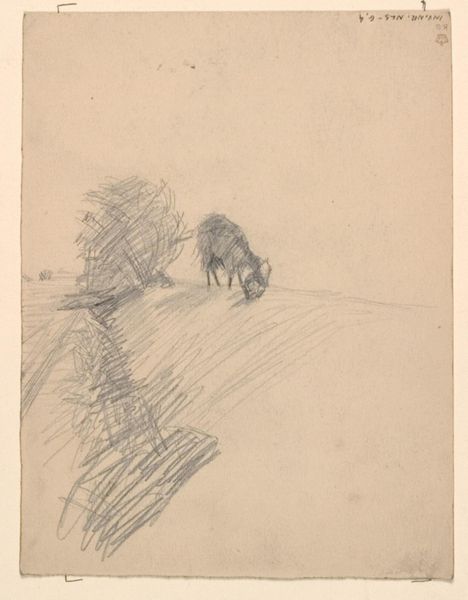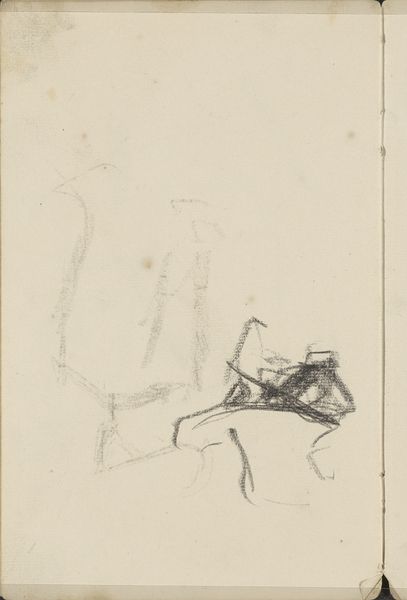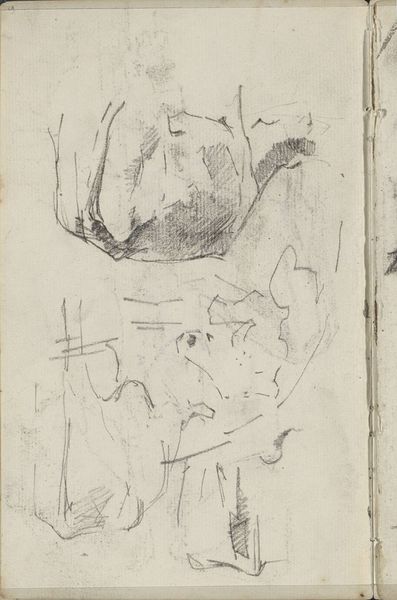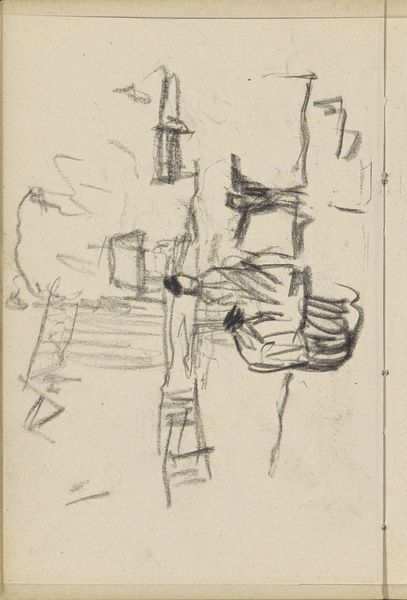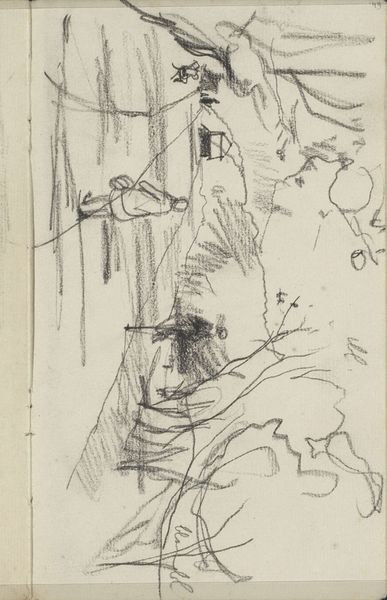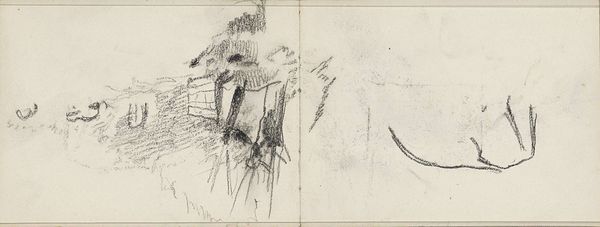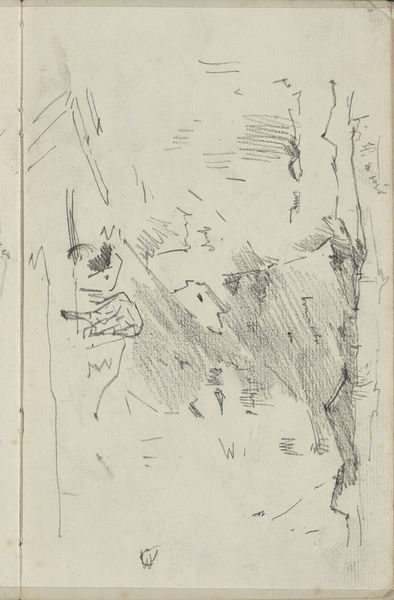
drawing, pencil
#
drawing
#
impressionism
#
pencil sketch
#
landscape
#
figuration
#
pencil
Copyright: Rijks Museum: Open Domain
Curator: This is "Koeien en figuren," or "Cows and Figures," a pencil drawing created by George Hendrik Breitner between 1880 and 1882. Editor: The energy! I see it. Even in a sketch like this, there's a raw, immediate quality to the way he captures these animals. The bold marks evoke the mass and presence of the cows. Curator: Absolutely, Breitner's known for that kind of immediacy, especially in his sketches. It gives us insight into his working process, that search for capturing a fleeting moment. This piece sits at the Rijksmuseum as part of their drawings collection. Looking at the context, Breitner was deeply embedded in representing modern life. These images of working-class life, of rural scenes juxtaposed with emerging cityscapes, challenge our understanding of landscape art at the time. Editor: It is less about romanticizing rural life and more about showing animals as part of the labor involved. Take the starkness of the cow's head in the upper-left. He isn't softening it; there is such depth created from only graphite. The way he's shaded its face, gives a presence that seems burdened. The pencil strokes are doing more than depicting shape. Curator: Precisely. There’s this interest in urban spaces developing at the time, but here he focuses our attention to farm life in a rapidly modernizing society. These quick studies allowed him to test ideas and imagery to potentially translate onto the bigger canvas for a grander social commentary. Editor: And cows throughout art history? Well, they’re loaded. Images of fertility, peace, abundance… But here, stripped down like this, Breitner seems to push away that symbolism. The focus shifts to the simple fact of their existence, to these farm animals laboring as they might, a reality mirroring working people within the cities he so commonly documented. Curator: Considering the changing roles that were quickly emerging as urban environments boomed, that resonance from rural to the modern worker becomes much louder in its political implication and representation of Dutch society. Thank you for walking us through the symbolism embedded in plain sight of a simple animal. Editor: My pleasure! It’s fascinating to see how artists engage and reflect what can easily go unseen.
Comments
No comments
Be the first to comment and join the conversation on the ultimate creative platform.
